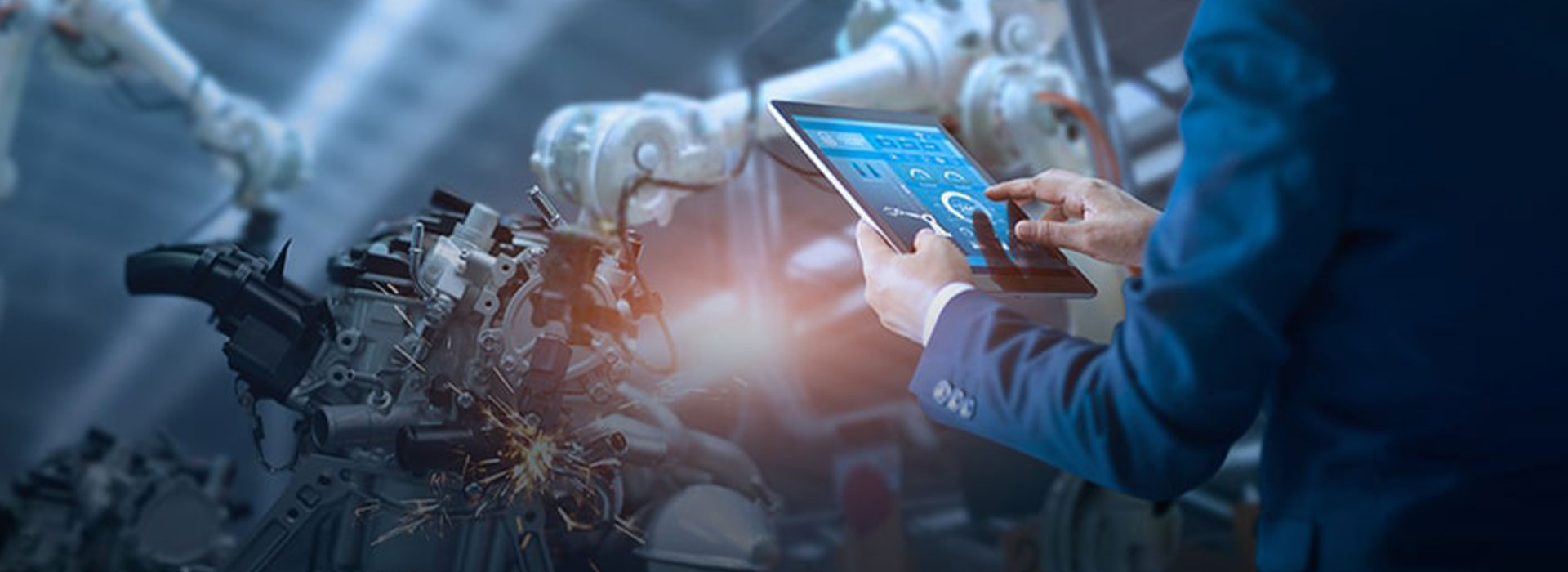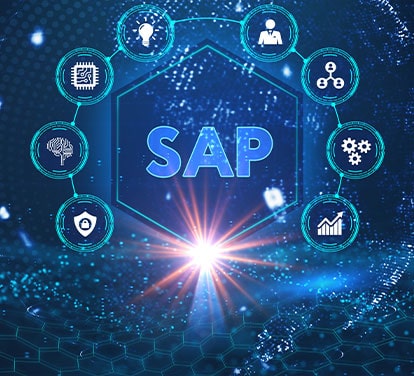Robotic Process Automation (RPA) uses software robots to handle high-volume repeatable tasks that humans previously had to accomplish. These include queries, calculations, and maintenance of accounts and transactions.
What differentiates RPA from old-style IT automation is the ability of the RPA software to be alert and flexible to changing circumstances, exceptions, and new situations. Once this software has been taught a process with multiple steps and applications, it mimics exactly what the human operators do. The underlying systems work exactly as they always have, without any required changes.
Predecessors of RPA
Screen scraping Technology -
This technology emerged in the Internet, helping extract data from the network. Although screen scraping had benefits, it depended on the software’s compatibility with the systems present in that generation. This constraint resulted in the loss of business, and our next tech came - the Automation & Management tools.
Automation and Management Tools -
This technology emerged in the early 1920s but gained popularity in the 1990s during the emergence of manufacturing. It aided in capturing customer data, processing invoices, getting the list of ordered items, and so on. With workflow automation and management tools, the manual workforce was reduced to perform data entry. Although it increased speed, efficiency, and accuracy, yet could not be used in all kinds of software for large-scale automation. The solution to this problem was first seen through Artificial Intelligence.
Artificial intelligence (AI) -
Artificial Intelligence is the capability of computer systems to perform tasks that usually require human intervention and intelligence. Subsequently, those kinds of tasks which can be performed based on the previous judgments of humans were taken over by Artificial Intelligence machines. AI and RPA are very different types of technology, but they complement each other. Both can be used independently, but the combination is extremely powerful!
Since RPA came into existence due to its predecessors, it has been highly dependent on screen-scraping and workflow automation. It provides drag-and-drop functionalities and uses optical character recognition (OCR) technology to capture data from changing websites. The technology consists of software robots (bots) that can mimic a human worker. Experts divide RPA technologies into three broad categories: probots, knowbots, and chatbots.
- Probots - Bots that follow simple, repeatable rules to process data.
- Knowbots - Bots that search the web to gather and store user-specified information.
- Chatbots - Virtual agents who can respond to customer queries in real-time.
BENEFITS OF RPA
It can help organizations on their digital transformation journey by:
- Enabling better customer service.
- Creating cost-related savings for manual and repetitive tasks.
- Allowing processes to be completed much more rapidly.
- Providing enhanced efficiency by digitizing and auditing process data.
- Ensuring business operations and processes comply with regulations and standards.
TOP RPA APPLICATIONS
- Customer service: Better customer service by automating contact center tasks, including verification of all relevant customer information, uploading scanned documents, and verifying information for automatic approvals or rejections.
- Accounting: General accounting, operational accounting, transactional reporting, and budgeting.
- Financial services: Integration with legacy systems, fetching data from multiple systems, fraud detection, automated customer query resolution, etc.
- Healthcare: Management of patient records, claims, customer support, account management, billing, reporting, and analytics.
- Human resources: Automate HR tasks, onboarding, and offboarding, updating employee data and timesheet submission processes.
- Supply chain management: Procuring and automating order processing and payments, monitoring inventory levels, and tracking shipments.
TOP RPA VENDORS
- Automation Anywhere Inc. - Provides an enterprise digital workforce platform geared towards procure-to-pay, quote-to-cash, HR, claims processing, and other back-office processes.
- Blue Prism - A set of libraries, tools, and runtime environments for RPA, which can easily be implemented in the short time span of 4 to 6 weeks
- EdgeVerve Limited - Helps enterprises modernize customer service, improve business processes and enhance operational productivity
- HelpSystems - Allows companies to streamline IT and business operations by automating tasks and workflows without the need to write code.
- UiPath - Offers an open platform to help organizations automate business processes efficiently.
- Workfusion - Combines AI-powered cognitive automation, robotics, and workforce orchestration to automate enterprise business processes.
TOP USE CASES OF RPA
- Data extraction: All enterprises need to record their transactions to be used for future processes. Instead of the manual workforce and doubting whether the transaction is stored correctly, a robot can gather and consolidate transactions.
- Data management: Aggregating a huge amount of data for the manual workforce would be tedious. So, a robot can do this job for employees so that employees can utilize their brains for something more important.
- Invoice Processing: Processing invoices manually for a large number of customers is a time taking task. Instead, with RPA, the productivity rate would be much higher. RPA bots are capable of processing thousands of invoices at a time.
- Supplier Pricing Comparisons: When you want to compare huge amounts of data on suppliers’ prices, you can have RPA bots gather the data and deliver it in the format that you want. This could save you time, energy, and money.
DO YOU KNOW WHICH KINDS OF RPA TOOLS ARE THERE?
Each tool can be segregated into 4 different types which are built as the extension of the previous generation of bots. Below are the 4 types of RPA tools in the market:
- Before the RPA generation came into the picture, Small enterprises were automating simple processes with simple hacks, excel automation, and macros. Neither were they scalable nor dependable, but they somewhat increased the efficiency of humans.
- Then, the Programmable solution bots came into practice. They interacted with other systems and required specific inputs.
- After that, Self-learning tools were developed. These tools saw the humans in action, acknowledged the process, and then took possession of the platform to perform the same actions.
- Finally, Smart automation bots intensify self-learning bots with advanced functionalities to handle unstructured information and make decisions based on intricate inputs.
TOP 5 RPA TOOLS TRENDING IN THE MARKET
UiPath
Description: UiPath provides support for Citrix. It can handle complex processes and is perfect for any size of business.
Features:
- Provides security by managing authorizations and providing encryption and access controls based on the role.
- Faster automation.
- Provides an open platform.
- Can handle any number of processes, regardless of their complexity.
Pros:
- Ease of use
- Provides good internal features.
- Cost-effective
Cons:
- Limited coding functionality.
Tool cost: Free Community Edition. For UiPath Enterprise RPA- Contact them for pricing details
Blue Prism
Description: Blue Prism RPA can work on any platform with any application. It is perfect for medium and large organizations.
Features:
- Supports multi-environment deployment model.
- Security is provided for network and software credentials.
- Can be used on any platform.
- Can work for any application.
Pros:
- High-speed execution
- Platform independence.
Cons:
- Not free, highly-priced
Tool cost: $15000 to $18000 annually.
Inflectra Rapise
Description: Rapise provides support for hybrid business scenarios. It can automate all kinds of applications. It is an on-premises solution and is perfect for small and medium organizations.
Features:
- Supports automation projects of all sizes
- Includes record and play functionality.
- Web and desktop automation, Web and screen scraping
- REST and SOAP calls, email processing (Gmail, Office 365, private mail servers)
- Provides an open platform for improvements and integration
- Provides support for Microsoft Dynamics applications.
Pros:
- Backed up with training and certifications.
- Fast execution.
Cons:
- Windows-only platform
- Not free
Tool cost: $1,599 / Single developer license, unlimited execution agents; Unlimited support and free upgrades for 1 year from purchase.
Automation Anywhere
Description: Automation Anywhere provides on-premise and cloud services. This tool is user-friendly and perfect for medium and large organizations.
Features:
- Provides Bank-grade security
- Provides security through authentication and encryption.
- Real-time reports and analytics.
- Platform independent
Pros:
- User-friendly.
Cons:
- IQBot needs to be improved.
Tool cost: Contact them for pricing details.
Contextor
Description: Contextor is perfect for any size front office. It provides on-premise and cloud services, support for Citrix, and works for all workstation applications.
Features:
- It communicates parallelly with all workstation applications.
- It supports Citrix and RDP hybrid virtualization settings.
- It provides reports and analytics.
Pros:
- It works fast.
- It is easy to integrate with AI.
Cons:
- It only supports the Windows operating system
Tool cost: Contact them for pricing details.
POPULAR MYTHS OF RPA
- Robots will replace humans - RPA is not entirely independent as of now. There are various instances where humans are needed for high-level thinking. At the same time, RPA allows employees to increase their efficiency and productivity. The manual workforce will reduce but never replace the complete manual workforce.
- RPA will only work in large - scale industries - A common misconception is that RPA is used only by large scaling productive industries. However, RPA can be applied to almost any repetitive, rules-based, and high-volume business activity in any industry.
RPA TOOLS USED IN JADE GLOBAL
In Jade, we work on UiPath for faster automation and ease of use without much human intervention. The drag-and-drop feature reduces human effort and time consumption and improves work efficiency. We also write codes using VB.Net, which are ingested with the help of invoke code feature. Inbuilt triggers, excel, email functionalities, and recordings are also available. Orchestrator is used in managing the monitoring, construction, and deployment of resources in an environment, acting in the same method as an integration point alongside third-party applications.
Currently, through UiPath, we are trying to automate and manipulate the generation of a 3A4 (XML document) that contains Line items and their respective information per the user’s need. For this purpose, we have set up different robots to run the process and monitor events and triggers. Learn from the datasheet: Drive Your Digital Transformation with Intelligent Robotic Process Automation
CONCLUSION
This technology is based on the concept of artificially intelligent workers. It is expected that the RPA market will reach approximately USD 8.75 billion by 2024 and can provide numerous benefits, such as improved precision, cost reduction, scalability, and compliance. It is obvious that RPA will disrupt the expected business process model and change the global subcontracting industry. The automation market will increase in the future and will be the key to a larger range of job creation.













